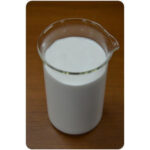
What is Zari Binder
Zari binder are require to provide a matrix in which the pigment particle may be entrapper, and they must be resistant to external pressures that would otherwise cause the pigment to be dislodge from the textile substrate, such as washing or rubbing.
A binder must be easy to apply and possess additional features that will enhance the pigment’s coloring impact. Because pigment coloring has extra influence the substrate, the components this addition will tend change the feel substrate or fabric.

Binder Basics
Polymerization is a chemical reaction in which a chemical molecule reacts with other similar molecules to generate bigger chainlike molecules called polymers.
Monomers are the individual molecules that make up a compound. Acrylic acids like methacrylic acid and methyl acrylic acid
Simple acrylic monomers that can be polymerize include methacrylic acid and acrylamide.
polymers with high molecular weight that form films around pigments and adhere to substrate, binding the pigment to the substrate
The acrylic monomer is the most widely use binder nowadays. The removal of water by evaporation and the addition of heat is all it takes to polymerize these products.
When the water is removed by drying, which takes one to two weeks at room temperature, binder will polymerize completely.
This process creates a linear polymer that entangles the pigment and itself in the fabric/fiber matrix.
Simple polymers have lower relative fastness qualities than binder that takes more energy to finish the operation, one might assume.
While this accomplishes the essential function of the binder, it is possible that this sort of polymer is more vulnerable to rubbing or washing than a binder that incorporates more fiber connection.
If the binder had extra polymer portions known as “branched chains” or “arms,” it might latch onto other polymer segments at right angles to the long linear chains.
Outside pressures such as rubbing and cleaning would be more stable due to the three-dimensional structure.
However, when the system becomes three-dimensional, it becomes more rigid by nature, stiffening the fabric.
“Copolymers” refers to these polymer-forming additives.
There are many types of binder examples: gold binder, zari binder





